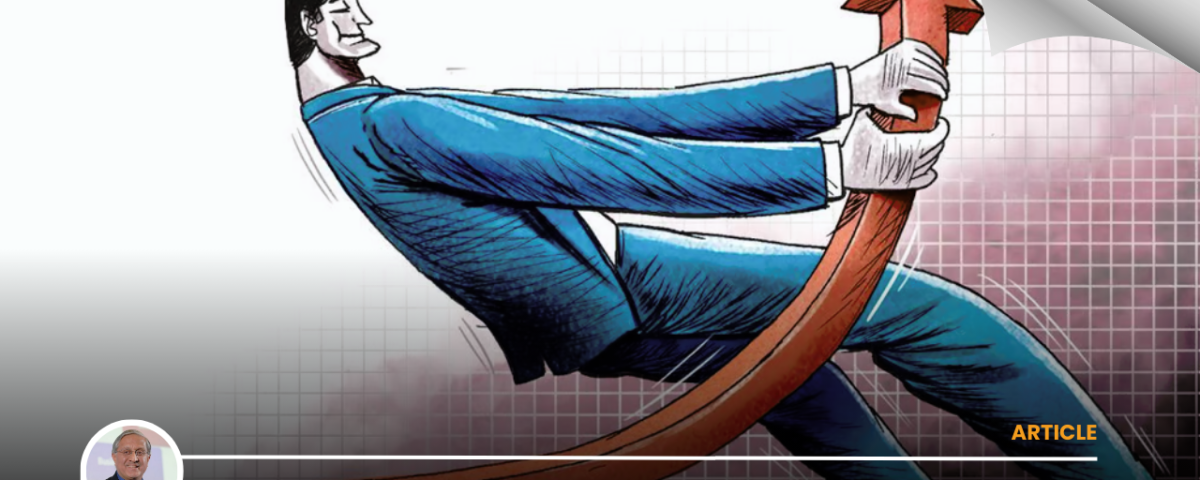By R. Gopalakrishnan and Sushmita Srivastava*
(rgopal@themindworks.me; sushmita.srivastava@spjimr.org)
*(R. Gopalakrishnan is an author and corporate advisor. He had served as Director, Tata Sons and, before that, as Vice Chairman, Hindustan Unilever. Dr Sushmita Srivastava is Associate Professor, People & Performance, at SPJIMR, Mumbai. Together, they have authored the book ‘How Kiran Mazumdar-Shaw fermented Biocon”, published by Rupa.)
In four articles so far about ‘Shaping Institutions’, we outlined Bhavan’s SPJIMR research findings on the mind-set, behaviour and actions that institutional shapers adopt. This month’s focus concerns two mindsets, not covered in earlier articles: (i) breaking barriers and (ii) stakeholder orientation.
These two dimensions emanate from similar values of autonomy, mastery, and purpose as propounded by Daniel Pink and act as the motivation for performance. The dimensions have significant impact on Institution building through the integration of people, policies, processes, and performance. What do they mean in practical terms?
Breaking barriers
Any transformation effort faces obstacles and barriers. The shaper seeks pearls of possibilities in the ocean of uncertainties, which are usually unseen and which open opportunities. Seeing the big picture and trusting one’s instincts requires a high impact and convergent set of actions to break those barriers. Once those rocks of resistance are broken, the barrage of changes serves as catalysts to create life-altering conditions. From the six companies we studied, here are some examples.
Hasmukhbhai Parekh registered HDFC as a housing mortgage company when he was already sixty-six. It was the first Indian institution for housing finance. If executed well, it was a chance for social change. Dr Manmohan Singh, then the Finance Secretary, doubted whether the idea would click. Hasmukhbhai remained enthusiastic about providing loans to the middle class to build their dream homes and even persuaded his nephew Deepak Parekh to join this venture. Today HDFC is the largest and most admired name amongst the financial institutions of India.
For young 23-year-old Uday Kotak, there was always the safety of the family business to return to. Uday threw himself into the bill discounting business and got his first business with zero capital invested. One also needs to guard against legal or societal implications of breaking barriers. Bill discounting was eventually by regulators due to misuse in accommodation by other operators. 60% of Kotak’s business vanished, so he went into equipment leasing and capital markets. Kotak focussed on increasing value and not volume. Growth must add economic value. It was action from a renewed mind-set that helped Kotak to transform from being a small bank to among India’s most valuable banks.
At Biocon, Kiran had to break many social barriers about gender. Job applicants were hesitant to join her as they perceived a lack of job security working for a woman. Lending institutions did not have faith in a women entrepreneur investing in technology that was unheard of in those days. Due to her strong sense of purpose, she overcame many barriers. Biocon became an admired biotech company globally. While most Indian Pharma companies focussed on generics, Kiran remained focussed on more risky business. She was the first to start research services on biosimilars through Syngene.
Breaking barriers requires the energy of purpose, confidence, risk-taking abilities, and risk mitigation to escape the gravitational forces of habitual thinking..
Stakeholder Orientation
The values and interests of various stakeholders of organizations e.g. employees, customers, shareholders, communities, suppliers, etc. often in conflict with each other and need to be balanced, harmonized, integrated, and aligned. Stakeholders are living, breathing human beings waiting for the human connection.
Stakeholder orientation is cultural and behavioral insofar as organizational members need to be continuously aware of and proactively act on a variety of stakeholder issues. Institution builders concurrently create value for all. As per the Stakeholder Theory, propounded by Edward Freeman in 1984, creating value requires challenge, critique, and creative imagination to handle potential conflicts. Such an orientation requires a deep and abiding focus on the purpose, not just profits. This helps institutions to operate in a pragmatic, sustainable, responsible, and ethical way. Examples again.
TCS stands out for its prominence in all respects. The Tata Business Excellence Model was driven to deliver strategic direction and drive business improvements which have connected the company with its suppliers, customers and partners. The company slogan, Experience Certainty, involved all stakeholders through commitments to deliver credible results.
Biocon’s purpose of accessible innovation for affordable health care has its focus on billions of patients rather than billions of dollars. Biocon partnered with Mylan and other international pharma players to better reach the company’s drugs into global markets. Biocon’s efforts for improving community health sharply aligned stakeholder interest. Employees develop positive learning abilities, knowing that their employer is satisfying all stakeholders. Global hiring was undertaken to build requisite capabilities.
At Marico, contributing to the good of society is important. Neither the company nor its stakeholders pollute the environment. Marico’s coconut collection centers provide cultivation related information to the farmers. Outreach programs focusing on scientific farming practices help raise farmer incomes. Additionally, Marico’s Corporate Social Responsibility (CSR) contribution is based on mentoring and facilitating entrepreneurs to scale their venture for the benefit of society through the Marico Innovation Foundation.
The descriptions of these two mind-set and actions, along with corporate examples, illustrate how organizations create a new narrative for Institution building.



